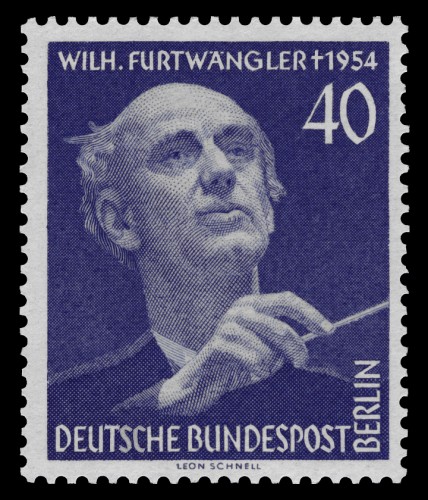
Wilhelm Furtwängler and Music
in the Third Reich
Antony Charles - http://www.gnosticliberationfront.com/ Not only during his lifetime, but also in the decades since his death in 1954, Wilhelm Furtwängler has been globally recognized as one of the greatest musicians of this century, above all as the brilliant primary conductor of the Berlin Philharmonic orchestra, which he lead from 1922 to 1945, and again after 1950. On his death, the Encyclopaedia Britannica commented: "By temperament a Wagnerian, his restrained dynamism, superb control of his orchestra and mastery of sweeping rhythms also made him an outstanding exponent of Beethoven." Furtwängler was also a composer of merit
Underscoring his enduring greatness have been several recent in-depth biographies and a successful 1996 Broadway play, "Taking Sides," that portrays his postwar "denazification" purgatory, as well as steadily strong sales of CD recordings of his performances (some of them available only in recent years). Furtwängler societies are active in the United States, France, Britain, Germany and other countries. His overall reputation, however, especially in America, is still a controversial one.
Following the National Socialist seizure of power in 1933, some prominent musicians -- most notably such Jewish artists as Bruno Walter, Otto Klemperer and Arnold Schoenberg -- left Germany. Most of the nation's musicians, however, including the great majority of its most gifted musical talents, remained -- and even flourished. With the possible exception of the composer Richard Strauss, Furtwängler was the most prominent musician to stay and "collaborate."
Consequently, discussion of his life -- even today -- still provokes heated debate about the role of art and artists under Hitler and, on a more fundamental level, about the relationship of art and politics.
A Non-Political Patriot
Wilhelm Furtwängler drew great inspiration from his homeland's rich cultural heritage, and his world revolved around music, especially German music. Although essentially non-political, he was an ardent patriot, and leaving his fatherland was simply out of the question.
Ideologically he may perhaps be best characterized as a man of the "old" Germany -- a Wilhelmine conservative and an authoritarian elitist. Along with the great majority of his countrymen, he welcomed the demise of the ineffectual democratic regime of Germany's "Weimar republic" (1918-1933). Indeed, he was the conductor chosen to direct the gala performance of Wagner's "Die Meistersinger" for the "Day of Potsdam," a solemn state ceremony on March 21, 1933, at which President von Hindenburg, the youthful new Chancellor Adolf Hitler and the newly-elected Reichstag formally ushered in the new government of "national awakening." All the same, Furtwängler never joined the National Socialist Party (unlike his chief musical rival, fellow conductor Herbert von Karajan).
It wasn't long before Furtwängler came into conflict with the new authorities. In a public dispute in late 1934 with Propaganda Minister Joseph Goebbels over artistic direction and independence, he resigned his positions as director of the Berlin Philharmonic and as head of the Berlin State Opera. Soon, however, a compromise agreement was reached whereby he resumed his posts, along with a measure of artistic independence. He was also able to exploit both his prestigious position and the artistic and jurisdictional rivalries between Goebbels and Göring to play a greater and more independent role in the cultural life of Third Reich Germany.
From then on, until the Reich's defeat in the spring of 1945, he continued to conduct to much acclaim both at home and abroad (including, for example, a highly successful concert tour of Britain in 1935). He was also a guest conductor of the Vienna Philharmonic, 1939-1940, and at the Bayreuth Festival. On several occasions he led concerts in support of the German war effort. He also nominally served as a member of the Prussian State Council and as vice-president of the "Reich Music Chamber," the state-sponsored professional musicians' association.
Throughout the Third Reich era, Furtwängler's eminent influence on Europe's musical life never diminished.
Cultural Vitality
For Americans conditioned to believe that nothing of real cultural or artistic merit was produced in Germany during the Hitler era, the phrase "Nazi art" is an oxymoron -- a contradiction in terms. The reality, though, is not so simple, and it is gratifying to note that some progress is being made to set straight the historical record.
This is manifest, for example, in the publication in recent years of two studies that deal extensively with Furtwängler, and which generally defend his conduct during the Third Reich: The Devil's Music Master by Sam Shirakawa [reviewed in the Jan.-Feb. 1994 Journal, pp. 41-43] and Trial of Strength by Fred K. Prieberg. These revisionist works not only contest the widely accepted perception of the place of artists and arts in the Third Reich, they express a healthy striving for a more factual and objective understanding of the reality of National Socialist Germany.
Prieberg's Trial of Strength concentrates almost entirely on Furtwängler's intricate dealings with Goebbels, Göring, Hitler and various other figures in the cultural life of the Third Reich. In so doing, he demonstrates that in spite of official measures to "coordinate" the arts, the regime also permitted a surprising degree of artistic freedom. Even the anti-Jewish racial laws and regulations were not always applied with rigor, and exceptions were frequent. (Among many instances that could be cited, Leo Blech retained his conducting post until 1937, in spite of his Jewish ancestry.) Furtwängler exploited this situation to intervene successfully in a number of cases on behalf of artists, including Jews, who were out of favor with the regime. He also championed Paul Hindemith, a "modern" composer whose music was regarded as degenerate.
The artists and musicians who left the country (especially the Jewish ones) contended that without them, Germany's cultural life would collapse. High culture, they and other critics of Hitler and his regime arrogantly believed, would wither in an ardently nationalist and authoritarian state. As Prieberg notes: "The musicians who emigrated or were thrown out of Germany from 1933 onwards indeed felt they were irreplaceable and in consequence believed firmly that Hitler's Germany would, following their departure, become a dreary and empty cultural wasteland. This would inevitably cause the rapid collapse of the regime."
Time would prove the critics wrong. While it is true that the departure of such artists as Fritz Busch and Bruno Walter did hurt initially (and dealt a blow to German prestige), the nation's most renowned musicians -- including Richard Strauss, Carl Orff, Karl Böhm, Hans Pfitzner, Wilhelm Kempff, Elizabeth Schwarzkopf, Herbert von Karajan, Anton Webern, as well as Furtwängler -- remained to produce musical art of the highest standards. Regardless of the emigration of a number of Jewish and a few non-Jewish artists, as well as the promulgation of sweeping anti-Jewish restrictions, Germany's cultural life not only continued at a high level, it flourished.
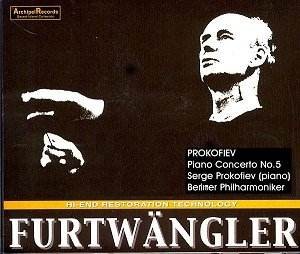
The National Socialists regarded art, and especially music, as an expression of a society's soul, character and ideals. A widespread appreciation of Germany's cultural achievements, they believed, encouraged a joyful national pride and fostered a healthy sense of national unity and mission. Because they regarded themselves as guardians of their nation's cultural heritage, they opposed liberal, modernistic trends in music and the other arts, as degenerate assaults against the cultural-spiritual traditions of Germany and the West.
Acting swiftly to promote a broad revival of the nation's cultural life, the new National Socialist government made prodigious efforts to further the arts and, in particular, music. As detailed in two recent studies (Kater's The Twisted Muse and Levi's Music in the Third Reich), not only did the new leadership greatly increase state funding for such important cultural institutions as the Berlin Philharmonic and the Bayreuth Wagner Festival, it used radio, recordings and other means to make Germany's musical heritage as accessible as possible to all its citizens.
As part of its efforts to bring art to the people, it strove to erase classical music's snobbish and "class" image, and to make it widely familiar and enjoyable, especially to the working class. At the same time, the new regime's leaders were mindful of popular musical tastes. Thus, by far most of the music heard during the Third Reich era on the radio or in films was neither classical nor even traditional. Light music with catchy tunes -- similar to those popular with listeners elsewhere in Europe and in the United States -- predominated on radio and in motion pictures, especially during the war years.
The person primarily responsible for implementing the new cultural policies was Joseph Goebbels. In his positions as Propaganda Minister and head of the "Reich Culture Chamber," the umbrella association for professionals in cultural life, he promoted music, literature, painting and film in keeping with German values and traditions, while at the same time consistent with popular tastes.
Hitler's Attitude
No political leader had a keener interest in art, or was a more enthusiastic booster of his nation's musical heritage than Hitler, who regarded the compositions of Beethoven, Wagner, Bruckner and the other German masters as sublime expressions of the Germanic "soul."
Hitler's reputation as a bitter, second rate "failed artist" is undeserved. As John Lukacs acknowledges in his recently published work, The Hitler of History (pp. 70-72), the German leader was a man of real artistic talent and considerable artistic discernment.
We perhaps can never fully understand Hitler and the spirit behind his political movement without knowing that he drew great inspiration from, and identified with, the heroic figures of European legend who fought to liberate their peoples from tyranny, and whose stories are immortalized in the great musical dramas of Wagner and others.
This was vividly brought out by August Kubizek, Hitler's closest friend as a teenager and young man, in his postwar memoir (published in the US under the title The Young Hitler I Knew). Kubizek describes how, after the two young men together attended for the first time a performance in Linz of Wagner's opera "Rienzi," Hitler spoke passionately and at length about how this work's inspiring story of a popular Roman tribune had so deeply moved him. Years later, after he had become Chancellor, he related to Kubizek how that performance of "Rienzi" had radically changed his life. "In that hour it began," he confided.
Hitler of course recognized Furtwängler's greatness and understood his significance for Germany and German music. Thus, when other officials (including Himmler) complained of the conductor's nonconformity, Hitler overrode their objections. Until the end, Furtwängler remained his favorite conductor. He was similarly indulgent toward his favorite heldentenor, Max Lorenz, and Wagnerian soprano Frida Leider, each of whom was married to a Jew. Their cultural importance trumped racial or political considerations.
Postwar Humiliations
A year and a half after the end of the war in Europe, Furtwängler was brought before a humiliating "denazification" tribunal. Staged by American occupation authorities and headed by a Communist, it was a farce. So much vital information was withheld from both the tribunal and the defendant that, Shirakawa suggests, the occupation authorities may well have been determined to "get" the conductor.
In his closing remarks at the hearing, Furtwängler defiantly defended his record:
The fear of being misused for propaganda purposes was wiped out by the greater concern for preserving German music as far as was possible ... I could not leave Germany in her deepest misery. To get out would have been a shameful flight. After all, I am a German, whatever may be thought of that abroad, and I do not regret having done it for the German people.
Even with a prejudiced judge and serious gaps in the record, the tribunal was still unable to establish a credible case against the conductor, and he was, in effect, cleared.
A short time later, Furtwängler was invited to assume direction of the Chicago Symphony. (He was no stranger to the United States: in 1927-29 he had served as visiting conductor of the New York Philharmonic.)
On learning of the invitation, America's Jewish cultural establishment launched an intense campaign -- spearheaded by The New York Times, musicians Artur Rubinstein and Vladimir Horowitz, and New York critic Ira Hirschmann -- to scuttle Furtwängler's appointment. As described in detail by Shirakawa and writer Daniel Gillis (in Furtwängler and America) the campaigners used falsehoods, innuendos and even death threats.
Typical of its emotionally charged rhetoric was the bitter reproach of Chicago Rabbi Morton Berman:
Furtwängler preferred to swear fealty to Hitler. He accepted at Hitler's hands his reappointment as director of the Berlin Philharmonic Orchestra. He was unfailing in his service to Goebbels' ministry of culture and propaganda ... The token saving of a few Jewish lives does not excuse Mr. Furtwängler from official, active participation in a regime which murdered six million Jews and millions of non-Jews. Furtwängler is a symbol of all those hateful things for the defeat of which the youth of our city and nation paid an ineffable price.
Among prominent Jews in classical music, only the famous violinist Yehudi Menuhin defended the German artist. After Furtwängler was finally obliged to withdrew his name from consideration for the Chicago post, a disillusioned Moshe Menuhin, Yehudi's father, scathingly denounced his co-religionists. Furtwängler, he declared,
was a victim of envious and jealous rivals who had to resort to publicity, to smear, to calumny, in order to keep him out of America so it could remain their private bailiwick. He was the victim of the small fry and puny souls among concert artists, who, in order to get a bit of national publicity, joined the bandwagon of professional idealists, the professional Jews and hired hands who irresponsibly assaulted an innocent and humane and broad-minded man ...
A Double Standard
Third Reich Germany is so routinely demonized in our society that any acknowledgment of its cultural achievements is regarded as tantamount to defending "fascism" and that most unpardonable of sins, anti-Semitism. But as Professor John London suggests (in an essay in The Jewish Quarterly, "Why Bother about Fascist Culture?," Autumn 1995), this simplistic attitude can present awkward problems:
Far from being a totally ugly, unpopular, destructive entity, culture under fascism was sometimes accomplished, indeed beautiful ... If you admit the presence, and in some instances the richness, of a culture produced under fascist regimes, then you are not defending their ethos. On the other hand, once you start dismissing elements, where do you stop?
In this regard, is it worth comparing the way that many media and cultural leaders treat artists of National Socialist Germany with their treatment of the artists of Soviet Russia. Whereas Furtwängler and other artists who performed in Germany during the Hitler era are castigated for their cooperation with the regime, Soviet-era musicians, such as composers Aram Khachaturian and Sergei Prokofiev, and conductors Evgeny Svetlanov and Evgeny Mravinsky -- all of whom toadied to the Communist regime in varying degrees -- are rarely, if ever, chastised for their "collaboration." The double standard that is clearly at work here is, of course, a reflection of our society's obligatory concern for Jewish sensitivities.
The artist and his work occupy a unique place in society and history. Although great art can never be entirely divorced from its political or social environment, it must be considered apart from that. In short, art transcends politics.
No reasonable person would denigrate the artists and sculptors of ancient Greece because they glorified a society that, by today's standards, was hardly democratic. Similarly, no one belittles the builders of medieval Europe's great cathedrals on the grounds that the social order of the Middle Ages was dogmatic and hierarchical. No cultured person would disparage William Shakespeare because he flourished during England's fervently nationalistic and anti-Jewish Elizabethan age. Nor does anyone chastise the magnificent composers of Russia's Tsarist era because they prospered under an autocratic regime. In truth, mankind's greatest cultural achievements have most often been the products not of liberal or egalitarian societies, but rather of quite un-democratic ones.
A close look at the life and career of Wilhelm Furtwängler reveals "politically incorrect" facts about the role of art and artists in Third Reich Germany, and reminds us that great artistic creativity and achievement are by no means the exclusive products of democratic societies.
Bibliography
Gillis, Daniel. Furtwängler and America. Palo Alto: Rampart Press, 1970
Kater, Michael H. The Twisted Muse: Musicians and Their Music in the Third Reich. New York: Oxford University Press, 1997
Levi, Erik. Music in the Third Reich. New York: St. Martin's Press, 1994
Prieberg, Fred K. Trial of Strength: Wilhelm Furtwängler in the Third Reich. Boston: Northeastern University Press, 1994
Shirakawa, Sam H. The Devil's Music Master: The Controversial Life and Career of Wilhelm Furtwängler. New York: Oxford University Press, 1992
A Note on Wartime Recordings
Among the most historically fascinating and sought-after recordings of Wilhelm Furtwängler performances are his live wartime concerts with the Berlin and Vienna Philharmonic orchestras. Many were recorded by the Reich Broadcasting Company on magnetophonic tape with comparatively good sound quality. Music & Arts (Berkeley, California) and Tahra (France) have specialized in releasing good quality CD recordings of these performances. Among the most noteworthy are:
Beethoven, Third "Eroica" Symphony (1944) -- Tahra 1031 or Music & Arts CD 814
Beethoven, Fifth Symphony (1943) -- Tahra set 1032/33, which also includes Furtwängler's performances of this same symphony from 1937 and 1954.
Beethoven, Ninth "Choral" Symphony (1942) -- Music & Arts CD 653 or Tahra 1004/7.
Brahms, Four Symphonies -- Music & Arts set CD 941 (includes two January 1945 performances, Furtwängler's last during the war).
Bruckner, Fifth Symphony (1942) -- Music & Arts CD 538
Bruckner, Ninth Symphony (1944) -- Music & Arts CD 730 (also available in Europe on Deutsche Gramophon CD, and in the USA as an import item).
R. Strauss, "Don Juan" (1942), and Four Songs, with Peter Anders (1942), etc. -- Music & Arts CD 829.
Wagner, "Die Meistersinger:" Act I, Prelude (1943), and "Tristan und Isolde:" Prelude and Liebestod (1942), etc. -- Music & Arts CD 794.
Wagner, "Der Ring des Nibelungen," excerpts from "Die Walküre" and "Gotterdämmerung" -- Music & Arts set CD 1035 (although not from the war years, these 1937 Covent Garden performances are legendary)
"Great Conductors of the Third Reich: Art in the Service of Evil" is a worthwhile 53-minute VHS videocassette produced by the Bel Canto Society (New York). Released in 1997, it is distributed by Allegro (Portland, Oregon). It features footage of Furtwängler conducting Beethoven's Ninth Symphony for Hitler's birthday celebration in April 1942. He is also shown conducting at Bayreuth, and leading a concert for wounded soldiers and workers at an AEG factory during the war. Although the notes are highly tendentious, the rare film footage is fascinating.
About the author:
Antony Charles is the pen name of an educator and writer who holds both a master's and a doctoral degree in history. He has taught history and is the author of several books. A resident of North Carolina, he currently works for a government agency.
Reproduced From: The Institute of Historical Review




 del.icio.us
del.icio.us
 Digg
Digg
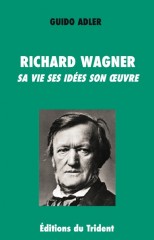
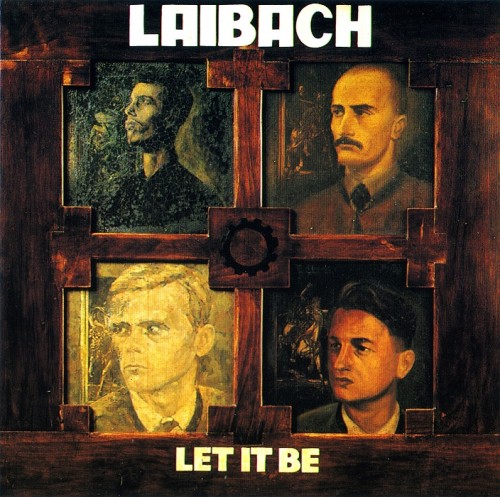

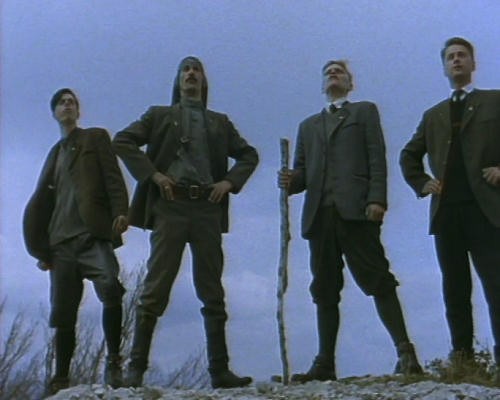

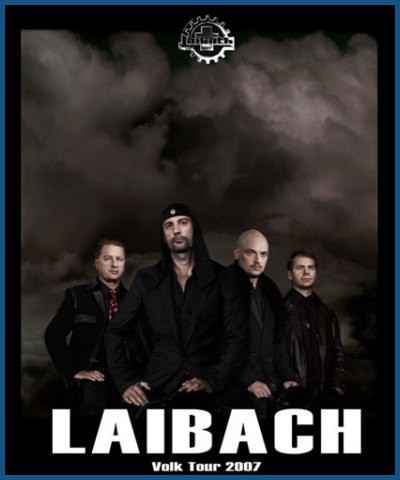 LAIBACH: «Was ist Kunst?»
LAIBACH: «Was ist Kunst?»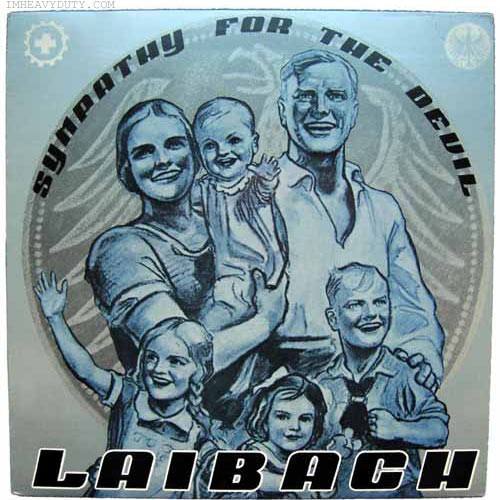 D'inspiration authentiquement totalitaire et avant-gardiste, ce concert devait durablement marquer les critiques slovènes, et asseoir la notoriété laibachienne. Sa contribution artistique au renouveau culturel slovène allait préparer les esprits à l'inéluctable et indubitablement favoriser le réveil de la petite république. Bientôt la Yougoslavie imploserait, débandade initiée par Ljubljana, qui déclarerait son indépendance le 2 juillet 1990: «L'esthétique nationaliste romantique est une phobie du service culturel progressiste. LAIBACH est organiquement lié à son environnement natal et entretient jalousement un lien instinctif avec la nation slovène et son passé, tout en étant constamment conscient de son rôle dans le polygone culturel et politique de la Slovénie» (entretien paru en 1986 pour la revue HHT). Une fois supplémentaire, le renouveau culturel identitaire allait préparer et jeter les bases des futures révolutions politiques.
D'inspiration authentiquement totalitaire et avant-gardiste, ce concert devait durablement marquer les critiques slovènes, et asseoir la notoriété laibachienne. Sa contribution artistique au renouveau culturel slovène allait préparer les esprits à l'inéluctable et indubitablement favoriser le réveil de la petite république. Bientôt la Yougoslavie imploserait, débandade initiée par Ljubljana, qui déclarerait son indépendance le 2 juillet 1990: «L'esthétique nationaliste romantique est une phobie du service culturel progressiste. LAIBACH est organiquement lié à son environnement natal et entretient jalousement un lien instinctif avec la nation slovène et son passé, tout en étant constamment conscient de son rôle dans le polygone culturel et politique de la Slovénie» (entretien paru en 1986 pour la revue HHT). Une fois supplémentaire, le renouveau culturel identitaire allait préparer et jeter les bases des futures révolutions politiques.

